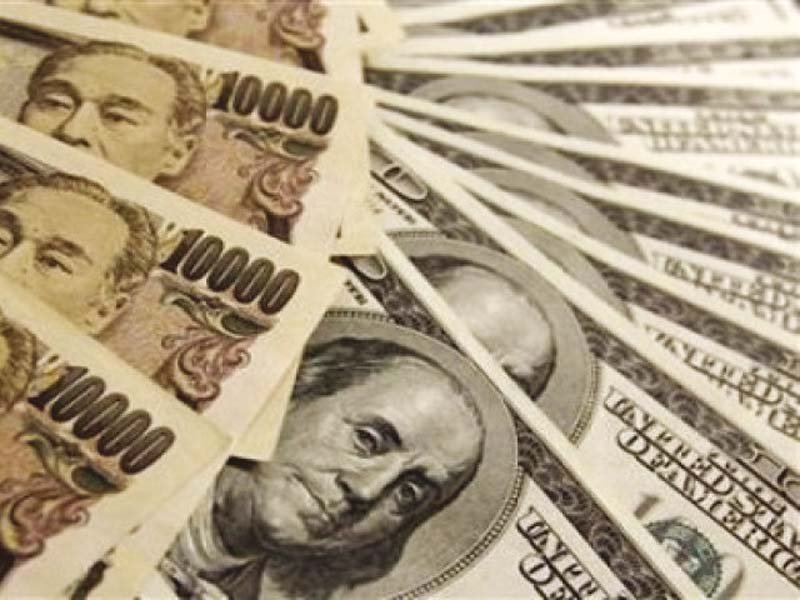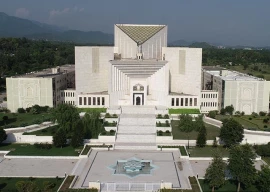
Govt signs $19b worth of loan deals in two years
Funds secured to cushion foreign exchange reserves, finance budget
ISLAMABAD:
The Pakistan Tehreek-e-Insaf (PTI) government contracted $10.5 billion worth of foreign loans in the last fiscal year to meet the country's external financing needs, which were up by one-fourth or $2.1 billion over the previous year.
The $10.5 billion fresh commitments were exclusive of the $6 billion International Monetary Fund (IMF) deal.
The federal government signed new agreements worth $10.5 billion with various development partners and foreign banks as compared to $8.4 billion in the preceding year, a growth of 25%, according to the annual Foreign Economic Assistance report 2019-20, released on Friday.
In total, the government of Prime Minister Imran Khan has signed $18.9 billion worth of new contracts in its first two years in power, excluding the IMF deal. The money has been secured to cushion foreign exchange reserves, finance budget and for development projects.
However, the share of budget financing and balance of payments support was 74% in the total new contracts of $10.5 billion in the last fiscal year. About 26% of the new commitments were allocated for project financing.
An amount of $7.5 billion was committed as budgetary support, of which $4 billion was committed by multilateral development partners as programme financing and the remaining was obtained from foreign commercial banks.
The economic affairs ministry said that a key reason behind increased reliance on budgetary support loans was fresh commitments to offset the socio-economic impact of the Covid-19 pandemic and to meet the higher financing requirement for external debt retirement.
The ministry said that under new agreements, the development partners were likely to disburse the committed amount in the next five to six years. These commitments were helpful to socio-economic development projects, economic reforms and balance of payments, it added.
The report has been released with a delay and does not carry details about the total outstanding stock of undisbursed loans, signed during previous years but had remained unspent due to longer gestation periods and slow execution of projects.
Out of the new agreements, $6.8 billion worth of financing agreements were signed with multilateral development partners, which were higher by $4.7 billion or 223% over the previous year.
Foreign commercial loans of $3.5 billion were contracted in the last fiscal year, which were down by $700 million or 17% due to Pakistan's commitments under the IMF deal to reduce reliance on expensive short-term foreign commercial loans.
Pakistan also entered into an agreement for $193 million in loans from bilateral development partners.
The country's reliance on foreign lending has deepened due to successive governments' failure to increase non-debt creating inflows - exports, foreign direct investment and foreign remittances.
The Asian Development Bank emerged as the largest development partner, which accounted for 30% of total new commitments by the multilateral lenders, followed by the World Bank (22%), Islamic Development Bank (7%) and Asian Infrastructure Investment Bank (5%). These financial institutions extended 98% of the total new commitments.
In the last fiscal year, the foreign lenders disbursed $10.7 billion, which was slightly higher than the total commitments of $10.5 billion. This means that the stock of undisbursed loans reduced by $200 million.
The multilateral lenders disbursed $5.6 billion or 53% of total disbursements. Commercial banks disbursed $3.3 billion or 32% of total disbursements.
An amount of $1.6 billion or 15% of the disbursements had been disbursed by bilateral development partners, particularly Saudi Arabia, China and the UK.
"Borrowing can be productive for economic growth of developing countries as long as economic returns are higher than the cost of borrowed funds," said the Ministry of Economic Affairs.
However, an overwhelming majority of new commitments and disbursements went into areas where there were hardly any economic returns, underscoring that the country had slipped into a debt trap.
The ministry said that while the external debt was useful for growth of the economy, dependence on it must be closely monitored and managed. "A prudent external debt management strategy, coupled with necessary institutional arrangements, is necessary for managing the external debt and improving repayment capacity of the country. Good debt accrues assets that generate positive returns and externalities."
As of June 30, 2020, Pakistan's total external public debt stood at $77.9 billion, higher by 6% over the previous year.
As of June 30, 2020, 70% of the total external public debt consisted of loans at fixed interest rates while the remaining 30% loans were obtained at floating interest rates.
The government also paid $10.4 billion in the last fiscal year on account of debt servicing of external public loans, including $8.5 billion in principal loans.
The economic affairs ministry said that in the last fiscal year there was a net increase of $1.8 billion, which indicated that during the period the government retired less loans in comparison to the new loans.
Net transfers have declined after 2018 when it had been recorded at $7.4 billion.








1737543473-1/T-Edit-article-images-(1)1737543473-1-394x300.webp)
1736070587-0/Express-Tribune-(2)1736070587-0-270x192.webp)
1737452260-0/Gaddafi-stadium-(2)1737452260-0-270x192.webp)
1737531830-0/Saim-Ayub-injury-(2)1737531830-0-270x192.webp)


1737462113-0/justin-(3)1737462113-0-270x192.webp)






COMMENTS
Comments are moderated and generally will be posted if they are on-topic and not abusive.
For more information, please see our Comments FAQ